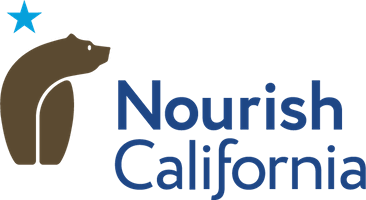Like books and pencils, food is an imperative tool for learning, but unequal access to school meals means some students in need miss out on the benefits of school nutrition. Meals served universally free can help prepare the over 6 million K-12 students enrolled in California’s public schools for success, regardless of race, income, or housing status.
Racial Inequity
Forty percent of California’s students of color attend very high poverty schools, compared to just eight percent of white students.[note]CFPA analysis of 2016-17 school year student poverty data from the California Department of Education.
“Students of color” includes students identifying as “American Indian or Alaskan Native”, “Asian”, “Pacific Islander”, “Filipino”, “Hispanic or Latino”, “African American”, or “two or more races”. These categories are designated by the California Department of Education.
“High poverty schools” refers to schools where 80% or more of students qualify for free or reduced price meals.[/note] This economic segregation widens disparities in academic achievement by concentrating students of color in schools where economic instability is the norm. Indeed, statewide achievement tests show an alarming gap between high-poverty and low-poverty schools.[note]With regards to achievement standards, high poverty schools are where over 55 percent of students are economically disadvantaged or English Learners.[/note]
The concentration of students of color in high-poverty schools is the result of deep structural inequities that necessitate the crafting of policies to bring justice to historically disadvantaged communities. Healthy food access alone will not close the achievement gap, but it is one part of the solution.
California Poverty
Largely due to the cost of housing, federal poverty measures do not accurately reflect true poverty in California. Some families are ineligible to receive free or reduced-price school meals through the national school meals programs, despite real economic hardship. According to the California Self-Sufficiently Standard, a family of 4 needs to make $63,979 a year to meet their basic needs — nearly twice the federal income limit to receive free meals.[note]Incomes ≥130% of the federal poverty level are eligible for free school meals ($31,005 for a family of in 2014). U.S. Department of Health and Human Services.
2014 figures used to match Family Economic Self-Sufficiency Standard.[/note] School meals served free of charge to all students on campus close this gap by supporting working families burdened by the high cost of living in California. Universally free school meals create truly hunger-free schools.
Housing Insecurity and Homelessness
As California’s housing crisis persists, an increasing number of school-aged children and their families are grappling with housing insecurity. Over 275,000 public school students experienced homelessness at some point during the 2015-16 school year — up 20 percent since 2014 and likely on the rise along with statewide rates of homelessness. One way to provide a stronger sense of stability and school connectedness for unhoused youth is through three easily accessible free meals per day: breakfast after the bell, universally free lunch, and after-school supper.
Statewide policy can address systemic inequities by targeting supports
for under-resourced communities and high-poverty schools.
Starting the School Year Hunger Free
Last year California passed landmark legislation (SB 138, Senator McGuire), sponsored by CFPA, that ensures all students in California’s highest poverty schools have access to a free breakfast and lunch each school day. As a result of SB 138 more than 4,200 schools are offering two universally free, nutritious meals to thousands of students each school day. Creating hunger free schools is a key strategy for ensuring equitable access to the basic learning resources needed for academic success.
Universally free school meals are known to reduce stigma commonly associated with receiving a free meal; increase participation in school meal programs and thereby draw down more federal dollars; lighten the administrative burden for schools; and completely eliminate unwieldy unpaid meal debt.
SB 138 is a win for California students and families, particularly those attending very high poverty schools. But there is still more work to do make sure hunger in public schools is eliminated and students have access to two free meals each day. It is unconscionable for the wealthiest state in the nation to allow children to go hungry at school.
What’s Next?
With SB 138, California policymakers set a threshold for when hunger free schools must exist and established a statewide value that connects nutrition and educational equity. We now look to extend these same values and benefits to even more students in California public schools. We seek to ensure that all California families struggling to get by can find stability and stigma-free nutritional resources for children while at school. We urge policymakers, community leaders, organizational partners, and schools to join us in creating hunger free schools statewide.
Take Immediate Action!
Did you know that unlike all other low-income public school students in California, low-income students in public charter schools are not granted the right to nutritious, affordable school meals?
AB 1871 (Bonta), which is currently awaiting the Governor’s signature, would ensure that all low-income, public school students in California – including charter school students – have access to at least one nutritious, free or low-cost school meal each day.
In order for California families to have a true, unencumbered choice in public education, their children need equitable access to basic resources at school. Those basic resources should include nutritious meals. California needs AB 1871 to make public charter schools a viable option for all students, as is required and intended under the law.
Governor Brown has until the end of September to sign or veto bills. He can act on AB 1871 at any time, so let’s raise our voices now to protect California students! Write, call or tweet your support for AB 1871.





